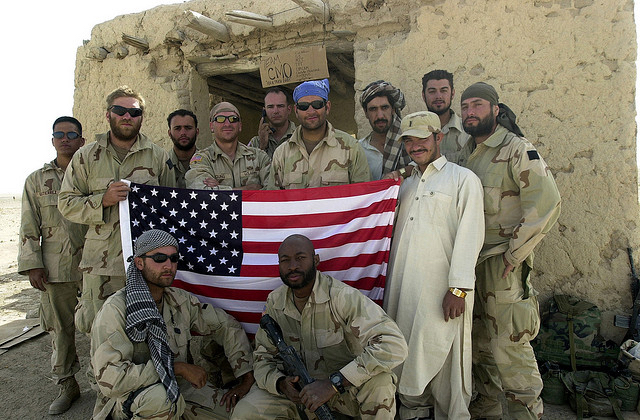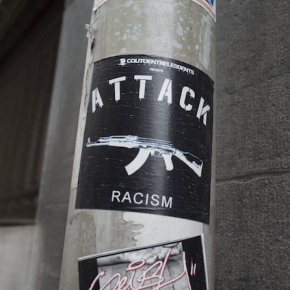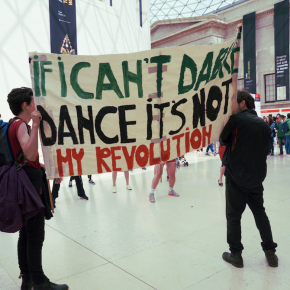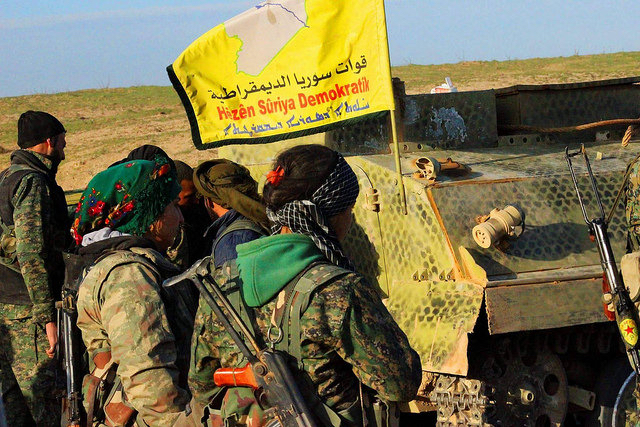PSYOP: Post- 9/11 Leaflets: Operation Enduring Freedom, is a collection of leaflets dropped by the United States military on Iraq and Afghanistan since 2001. The book, which was put together by Christoph Büchel and Giovanni Carmine, was published in 2005 by Win With Words as part of an exhibition at the 7th Sharjah Biennale, in the United Arab Emirates.
PSYOP: Post- 9/11 Leaflets seems put together more as a zine than an academic text, which has its positives and negatives, but very much explains the intention of these leaflets: “Capture their minds and their hearts will follow.”
Propaganda in the modern age is usually thought of as something high-tech and probably Internet-based. After all, there are countless examples that can be easily seen or at least easily sought out: from the extremely radical websites of groups like ISIL and countless pro-life organizations to the comparatively benign Facebook and Twitter feeds coming from mainstream political candidates. But the impact of online propaganda is tempered by the inherent nuance in being able to independently look up a second opinion.
However, the ability to refute information and argue accurately is directly tied to having access to both differing opinions and knowledge itself. If you cannot find books and articles on the subject and don’t have the technology needed to access the Internet, propaganda has a decidedly different impact. This is felt especially in the extreme poverty of war zones, which not surprisingly are historically also one of the most heavily propagandized environments.
The most basic and most popular type of wartime propaganda is the simple leaflet, which can be manufactured for pennies and dropped by the thousands over enemy territory. These one or two-sided pieces of paper, usually just a few inches in size, are purposely minimal, oftentimes containing only a handful of words and a single image.

The wartime leaflet is not an attempt, like the earlier mentioned websites, of convincing people that your viewpoints are correct and they should join up. Instead, the idea here is to convince the enemy that not only are they fighting a lost cause but that they should probably just give up immediately before they’re killed. It is purposely and exceptionally blunt. The design, like the message, is straight and to the point.
A recent example from the fight against ISIL illustrates this perfectly: in this leaflet, reported to have been dropped by the thousands over Raqqa, Syria in May, a militant is pictured wedged between the hour and minute hands on a clock soon to strike midnight. The text of the leaflet reads in part: “We have killed many of your leaders and countless fighters. We can strike you anytime, anywhere, and you are powerless to stop us. We will never quit, and you are destined to lose your war. The clock of your destruction is ticking, and zero hour is very near.”
The book is quite literally just hundreds of these leaflets, page after page of images and text in translation. It is overwhelming to look through, which seems appropriate given the subject matter. The editors seem intent on not editorializing or really offering any kind of explanation.
Divided into sections for Iraq and Afghanistan, the book also includes a brief background about the nature and history of propaganda leaflets, culled from two US Army documents: “Psychological Operations Field Manual No. 33-1” from 1979 and “Psychological Operations (PSYOP) Media Subcourse PO-0816” from 1983. It’s unnerving to realize how this tactic hasn’t had to change much in the past few decades.
According to a blurb on the inside of the back cover, the book’s content was collected online from various sources. The images are low-res and the translations brief. There are no pretenses at this being any kind of academic or even journalistic source. It’s a historical document, a collection of raw material that is still very much unseen outside of the areas where it was originally distributed.
To that end, PSYOP: Post- 9/11 Leaflets: Operation Enduring Freedom, despite being far from ideal, is very much necessary. Ten years after it was published, the leaflets contained in the book are still very interesting and extremely shocking to look at.
Photographs courtesy of jrp|ringier and the US Army.





